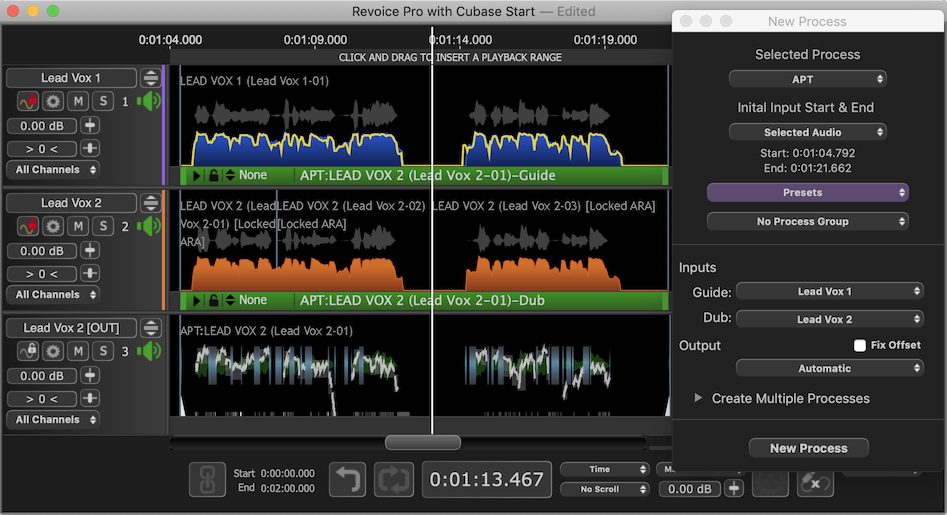Applying a Process
This topic shows you how to apply a Process to the captured audio in Revoice Pro and how to replay the processed audio seamlessly in Cubase Pro or Nuendo.
We start from the end of the previous topic (Capturing Audio) where we created a simple project by transferring two simple (short) tracks to Revoice Pro from Cubase Pro using the RevoiceProLink plug-in.

In this example we are going to use an APT (see Audio Performance Transfer (APT) for more details) to align the Dub signal Lead Vox 2 (...) to the Guide signal Lead Vox 1.

First, in Revice Pro select the Guide signal Lead Vox 1 (...) in track Lead Vox 1.

In Revoice Pro press the B key to show the New Process panel. Add a new APT process using the settings:
Selected Process: APT,
Intial Input Start & End: Selected audio,
Guide: Lead Vox1,
Dub: Lead Vox2
Output: Automatic
Click the button New Process to add the APT...

..., which will generate the following output on track Lead Vox2[Out].
To audition the quality of the aligned output in Revoice Pro, press the key E, then press the space bar.

The ARA interface will automatically map the output of the APT process for the Dub signals Lead Vox2 (...) back to the corresponding Audio Events in Cubase Pro.
In this example, Cubase will replay the aligned versions of the three Lead Voxs 2 (generated by Revoice Pro's APT process) in place of the original audio
In Cubase Pro you can listen to the quality of alignment by listening to the first and second tracks together.
If you need to create a permanent version of the aligned signals, you use Cubase's Render In Place function on each of the Audio Events LEAD VOX 2 (...) . The rendered output has the advantage of showing accurate waveforms in Cubase's Audio Events.